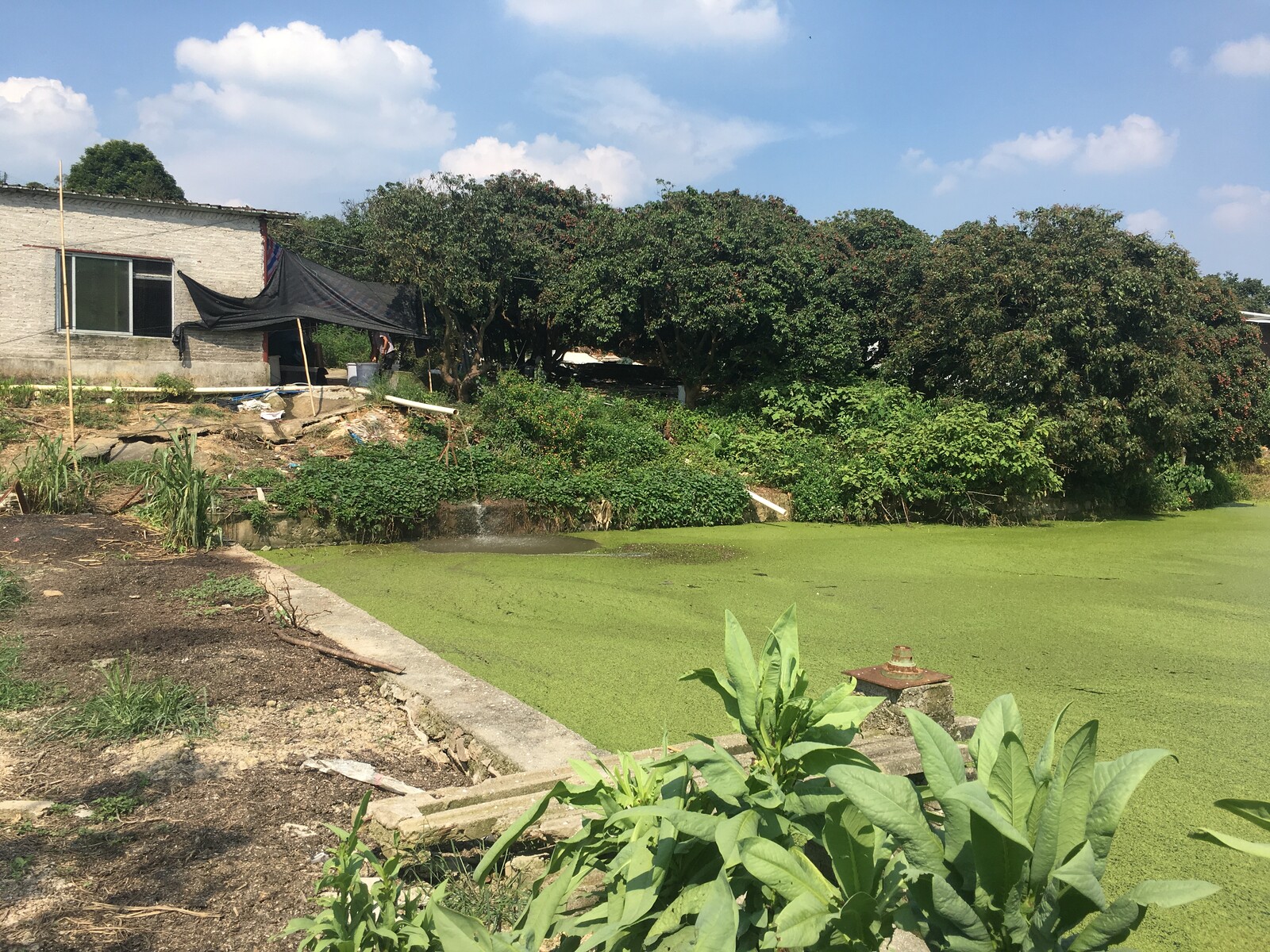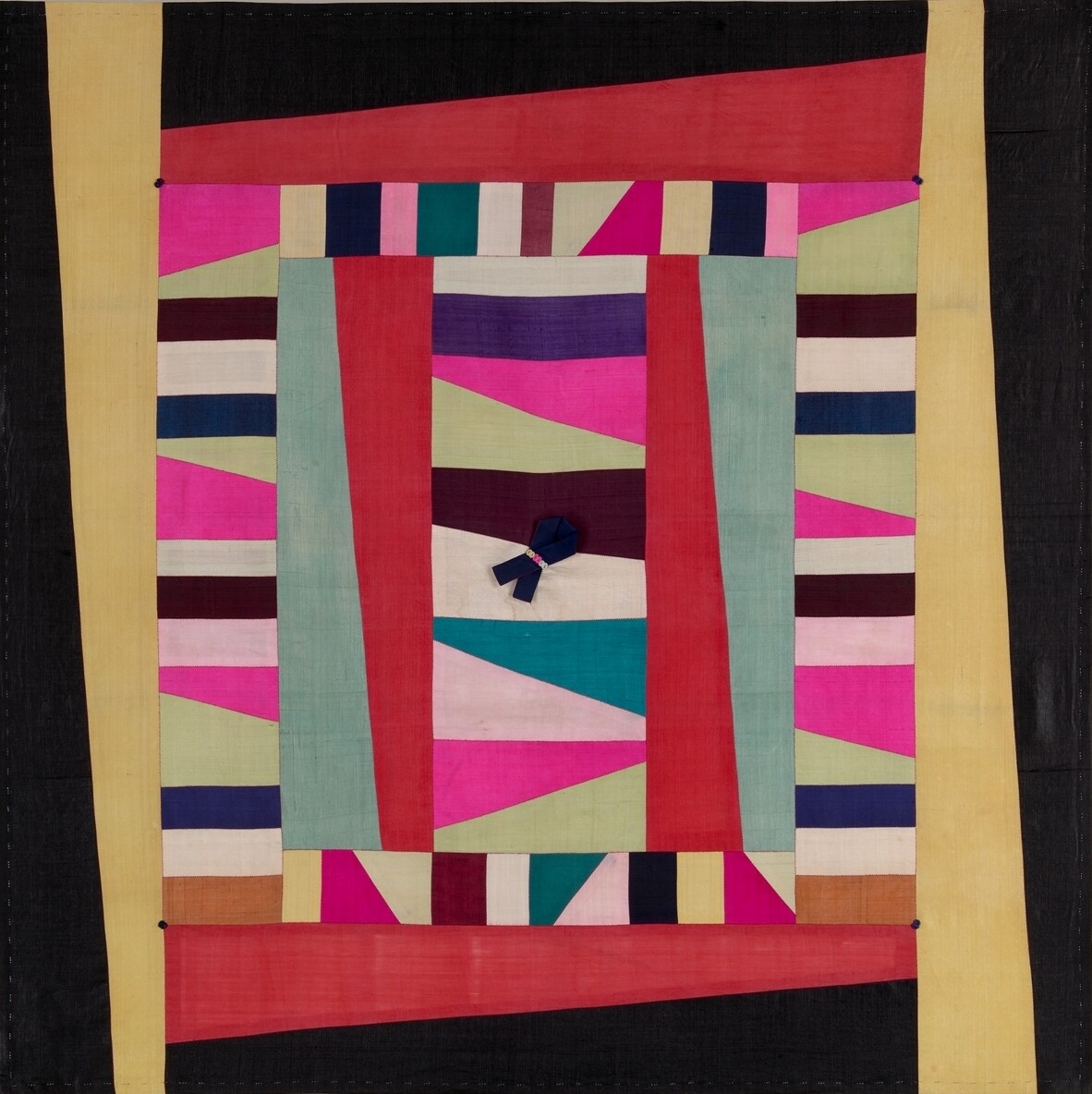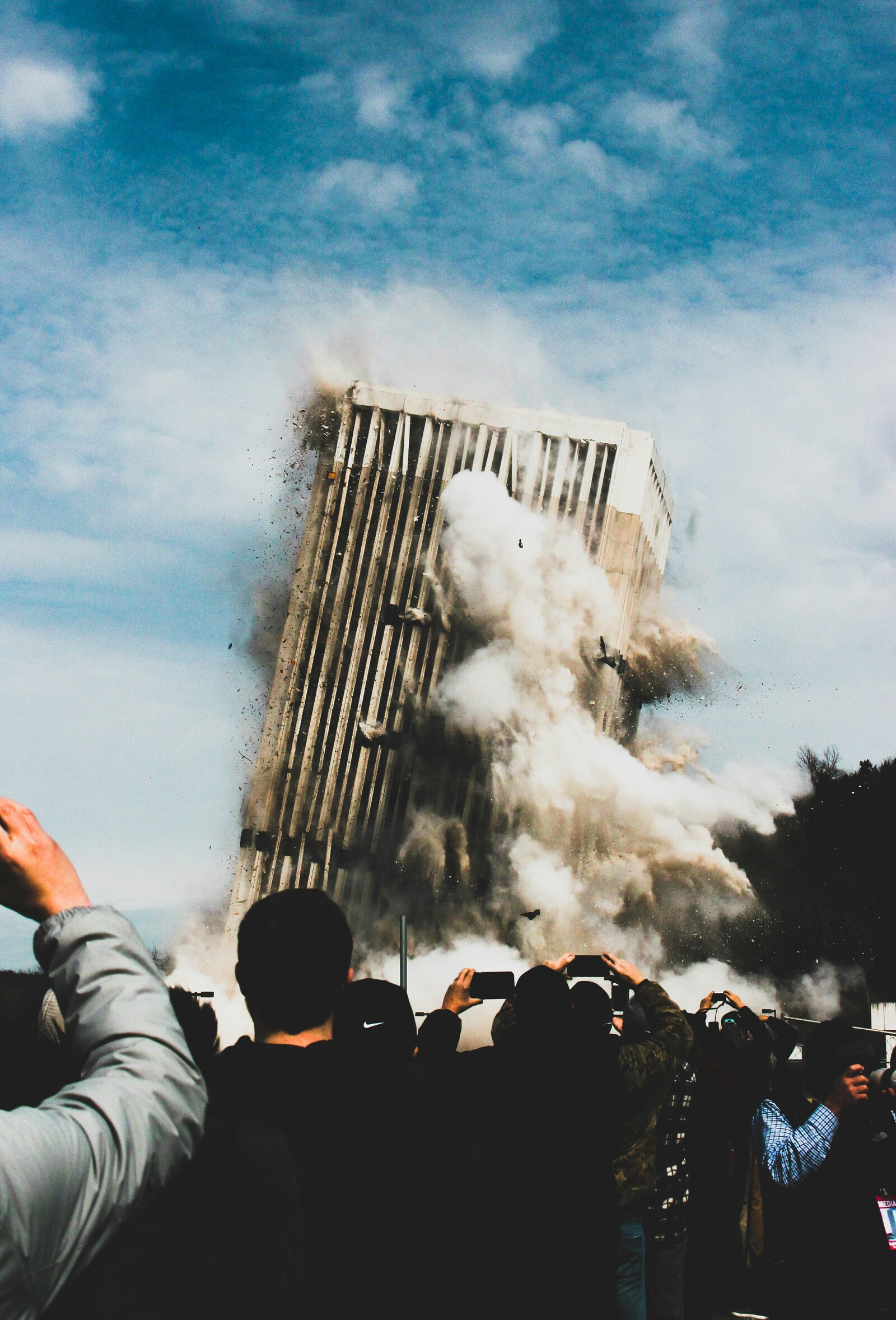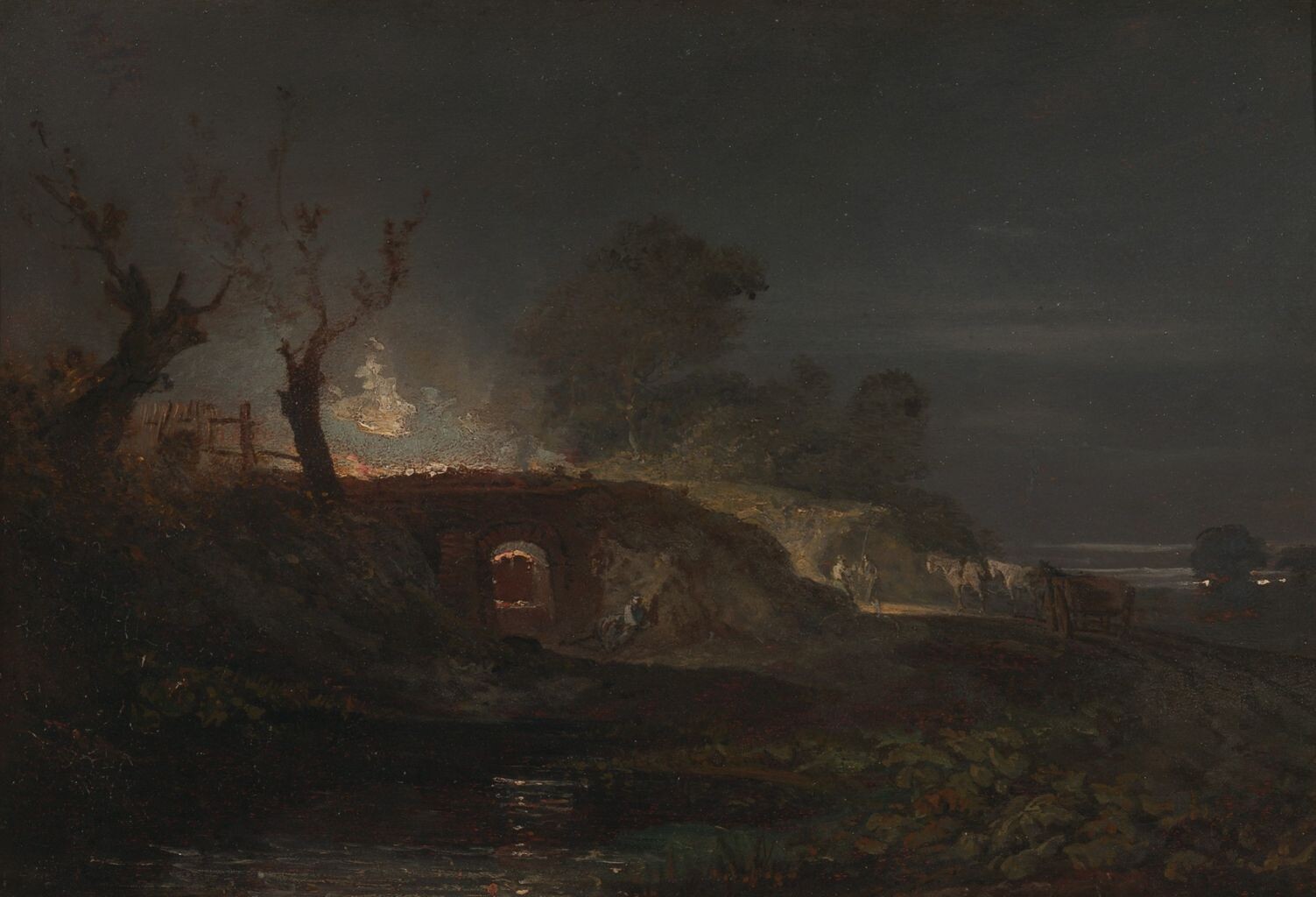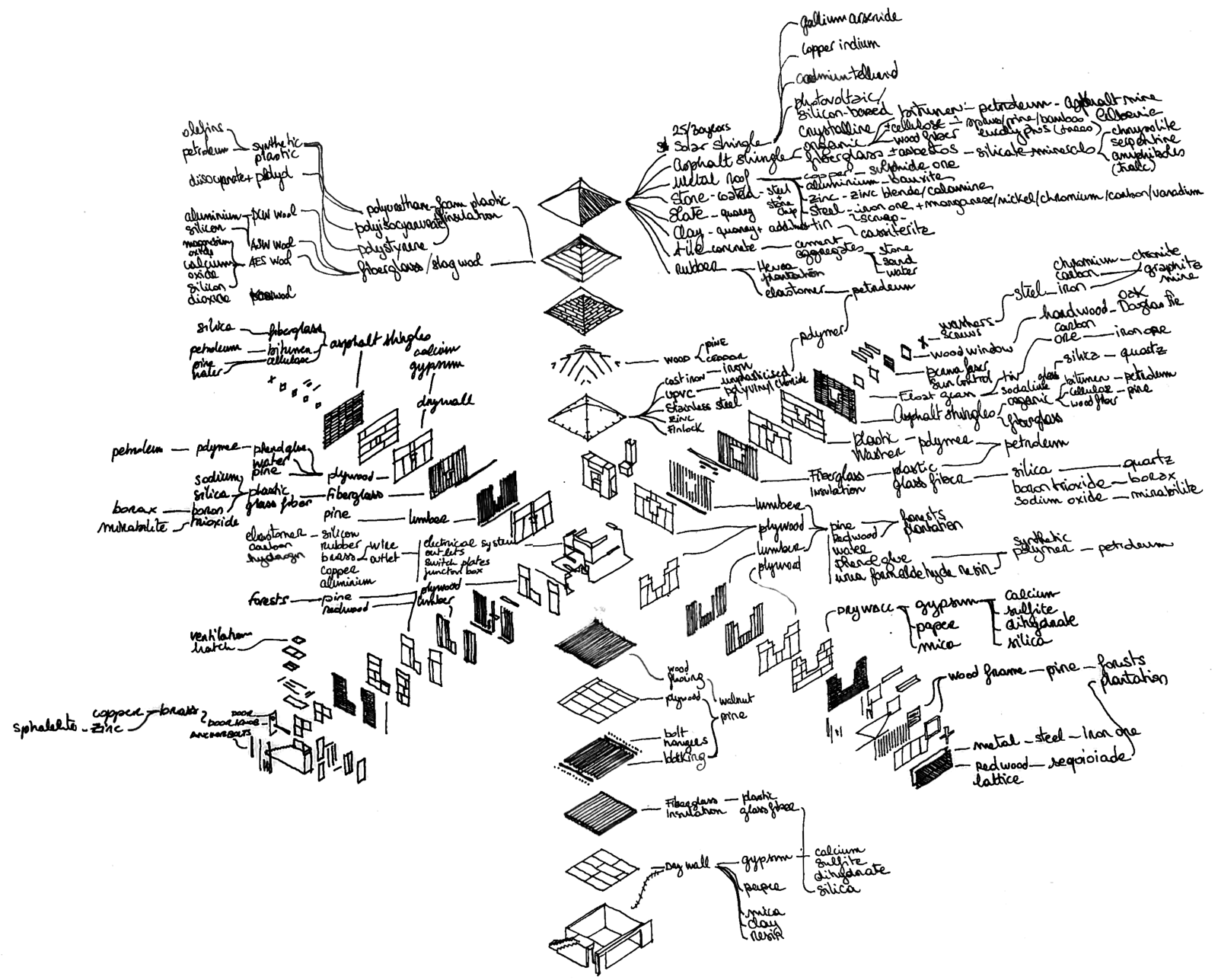In 2018, I visited a family farm in a village about an hour and a half outside of Guangzhou. Ducks and chickens wandered the yard, which sat next to a large aquaculture fishpond. It was a typical farm in southern China.1 Up a small, gentle incline sat an enclosed structure, formerly a pigpen. Since the early 1980s, China has been concerned with increasing domestic pork production in order to keep up with growing consumer demand. The result is that, over the last decade, pigs have been gradually ushered away from household farms like this one, and into new, modern industrialized farms. In 2022, an agriculture company unveiled China’s first vertical hog farm in the city of Ezhou: a twenty-six-story high-rise building, the latest experiment in intensified hog-raising.2 Inside the megafarm, which resembles an apartment block, the company expects to raise 25,000 pigs a year on each of the twenty-four breeding floors.
The vertical megafarm is an extreme manifestation of the logics and techniques of factory farming: enclosure, intensification, automation, and standardization. The relocation of hogs from rural smallholdings and family farms to megafarms is an experiment that proponents hope will resolve long-standing fears about food shortages and insecurity, which are only increasing in a time of climate anxiety and dwindling land.3 China itself is faced with the challenge of feeding 21% of the world’s population on 9% of its arable land. These experiments promise to leverage techno-science to accelerate and intensify animal growth in order to satisfy human appetites.
Back on the family farm, the old pen did not sit empty. A biotech startup had converted the former pigpen into an experimental rearing station for black soldier fly larvae (Hermetia illucens), a common and widespread insect belonging to the family Stratiomyidae. The fly larvae consume agricultural waste and hog manure and, once grown, are sold as feed for aquaculture or poultry. Food companies, meanwhile, have started to promote insects as a widely available and affordable food source. This startup in particular was looking into grinding up the larvae in order to market it as a protein-rich food supplement for people.
An array of concrete boxes arranged in a grid, each approximately one square meter in area, spanned the length of the dimly lit pigpen. These units corresponded to developmental stages of the fly larvae (larval, pre-pupal, and pupal). Local villagers tend to each trove, measuring and adjusting the temperature, humidity, and light to ensure optimal conditions for fly growth. Here, human caregivers and fly larvae both perform different types of labor, with villagers performing the daily labor of rearing while fly larvae perform the vital metabolic work of consumption, growth, and death.
Thinking about the contemporary ecological crisis, it can be helpful to see human life through the prism of other forms of life.4 The connected stories of hogs and flies suggest that new configurations of feeding, dwelling, and care are emerging in the face of increasingly dense urban environments and ecological precarity. In the early decades of the twenty-first century, techno-scientific experiments in feeding have subjected both porcine and insect life to the same logic of industrial farming: their lives are captured by and subjected to human manipulation with the goal of fueling urban food production. The rearing of fly larvae, however, speaks to a more complex narrative. In the pigpen, a more sustainable human food system relies on the symbiosis and conjuncture of human, porcine, and insect life.5
Marxist ecologists have used the concept of the “metabolic rift” to describe the disjuncture that has emerged between agricultural production and the return of nutrients to the soil under industrial capitalism.6 However, in the black soldier fly experiment, feeding generates metabolic relationships—not only within a single animal body, but by configuring relationships between animals, plants, microbes, and humans such that they are, in the words of Hannah Landecker, “selectively augmented and reconnected anew.”7 At the same time, feeding demands and generates what Lynn Margulis refers to as “systems in which members of different species live in physical contact.”8 Feeding produces systems of cohabitation, systems in which humans dwell beside and alongside other life forms.
The black soldier fly experiment envisions the developmental stages of the organism as a tool of bioconversion. Insect life thrives on organic waste as a biological substrate, and, in so doing, reduces the metabolic rift. The life-cycle of the fly becomes an infrastructure of life-support, a system of circulation that mediates and facilitates the circulation of both nutrients and waste. The phases of the animal’s lifecycle perform the metabolic labor of digestion, processing, and excretion.9 This process doesn’t just produce waste to be managed, displaced, or contained: it creates matter specifically engineered to support the growth of other life forms. Insect metabolism is a key site where life-forms are differently re-membered and recomposed. The coordination of the lifecycles of hogs, flies, and humans leads to a symbiosis in which metabolic functions of different life forms are interdependent and ensure mutual survival. The nutrients produced and excreted by one life form support the growth and nourishment of another.
Imagining the fly lifecycle as a tool of bioconversion fits into a long history of treating organisms as machines. From GMOs to synthetic biology, science has targeted animal and plant life as sites to automate, intensify, and scale growth for human purposes. Fly-breeding, however, makes clear the necessity of human cultivators. Fly-rearing deploys strategies long used in animal husbandry: the manipulation of the rhythm, speed, and time of breeding, and the control of temperature and light. More importantly, cultivating flies requires that the human caregiver be carefully attuned to the tempo and rhythm of fly life. Farmers have long been sensitive to how animal growth-cycles are susceptible to their surroundings. Systems of metabolic symbiosis invite humans to orient their own routines and habits toward the tempos and rhythms of other life forms.
Feeding is not only a question of how we might cultivate animals as food. The story of the hog and fly raises questions about the spaces and arrangements of human and animal life, about how humans and non-humans can live together.10 Cities in China are increasingly marked by verticality and density. Density incites concerns with biosecurity and the need to protect humans from the transmission of disease. The containment and displacement of waste and the separation of human and non-human life have long been strategies to manage disease and outbreaks. In an age of microbial anxiety, interspecies separation dominates spatial imaginaries of safety, security, and modernity.
The vertical pig-towers of Ezhou project technoscientific imaginaries of human control within dense spaces of animal dwelling. Vertical towers restrict and fix animal movement, closed-circuit televisions monitor animal movement, and strict protocols are put in place to manage the risk of outbreaks. However, in Ezhou, as with factory farms in the United States, industrial agriculture does not enact interspecies separation as much as it creates conditions of interspecies contact. At every stage, as workers enter the confined spaces of hog breeding to provide routines of care, their bodies come into intimate contact with the industrialized pig, sharing in its landscape of disease. Industrial rearing is fundamentally a project in which the labor of specific populations is reconfigured around and exploited through different aspects of animal biology.11 It perpetuates the myth of automation and interspecies separation even as human workers’ lives are synchronized to that of the industrialized hog.
Fly-raising at the former pigpen points toward an alternative mode of human-animal cohabitation. The family farm has traditionally been a site of intimate contact between animals and humans. These farms remind us of care arrangements that contrast with the alienation of industrial labor, which sees animals, their bodies, and their lifecycles as commodities. On family farms, cultivators frequently come to care for animals as kin.12 In an age of ecological crisis, the question of how to perpetuate life might be approached by recognizing the interspecies nature of dwelling and by creating spaces where human habitats are more open and hospitable to other life forms.13
Margulis shows that, at the cellular level, evolution is a process of symbiosis, in which cohabitation between different kinds of organisms can result in symbiogenesis, the formation of new organisms through symbiotic mergers.14 Cohabitation opens up the potential for transformation, the merging and creation of new bodies and systems. Feeding reminds us of the need to forge relations of symbiosis and cohabitation, of the need to orient relations between humans and non-humans toward mutual survival.
A household farm is distinct from backyard farms, farms that raises fewer than five pigs per year, and large-scale factory farms. A household farm specializing in hog production typically operates with an annual pig production of between 10 and 500 pigs per year and accounted for the majority of pigs raised in China in 2009.
Daisuke Wakabayashi and Claire Fu, “China’s Bid to Improve Food Production? Giant Towers of Pigs,” The New York Times, February 8, 2023, ➝.
Mindi Schneider, “Feeding China’s Pigs: Implications for the Environment, China’s Smallholder Farmers and Food Security,” Institute for Agriculture and Trade Policy, May 2011.
Achille Mbembe, “Futures of life and Futures of Reason,” Public Culture 33, no. 1 (93) (January 2021): 13.
Donna Haraway, Staying with the Trouble: Making Kin in the Chthulucene (Durham, NC: Duke University Press, 2016) and Anna Tsing, The Mushroom at the End of the World (Princeton: Princeton University Press, 2015).
John Bellamy Foster, Marx’s Ecology: Materialism and Nature (New York: Monthly Review, 2000).
Hannah Landecker, “The Food of Our Food,” in Eating Besides Ourselves, (Durham, NC: Duke University Press, 2023), 57.
Lynn Margulis, Symbiotic Planet: A New Look at Evolution (New York: Basic Books, 1998), 5.
Les Beldo, “Metabolic Labor: Broiler Chickens and the Exploitation of Vitality,” Environmental Humanities 9, no. 1 (2017): 108-128.
Maan Barua, Lively Cities: Reconfiguring Urban Ecology (Minneapolis: University of Minnesota Press, 2023).
Alex Blanchette, Porkopolis: American Animality, Standardized Life, and the Factory Farm (Durham, NC: Duke University Press, 2020).
Radhika Govindrajan, Animal Intimacies: Interspecies Relatedness in India’s Central Himalayas (Chicago: University of Chicago Press, 2018).
Anna Tsing, Heather Ann Swanson, Elaine Gan, and Nils Bubandt, Arts of Living on a Damaged Planet (Minneapolis: University of Minnesota Press, 2017).
Margulis, Symbiotic Planet, 33.
Material Acts is a collaboration between e-flux Architecture and Craft Contemporary within the context of the eponymous exhibition, curated by Kate Yeh Chiu and Jia Yi Gu as part of Getty PST ART: Art & Science Collide.
